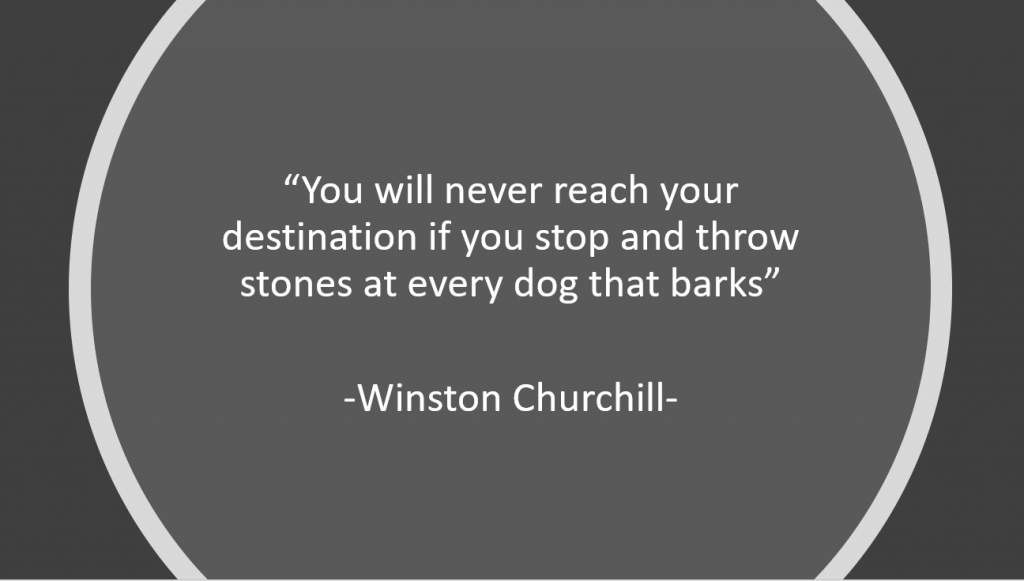Introduction
One week ago (27th of August) we published the sixth article in a series of eight about Change Management and the consequences for IT projects. It focused in-depth on systematically planning for and creating short-term wins. Short-term wins help to build momentum and help to prevent that the entire change effort is put at risk. By doing this, you ensure the continuous support of many people that would otherwise give up the earlier provided support and join the group of people that were already resisting the change.
The experience from many different sources tells us that 75% of System Implementations fail to deliver their expected benefits. The one constant factor is that Change Management for People, Process and Technology is not appropriately addressed. Business leaders often do not realize enough how important this is or don’t know how to achieve it. Simply stated, but not so easily done.
This week we will look at step 7 (out of 8) of the model of Kotter: Consolidating improvements and producing more change.
You are encouraged to read further if you want to ensure your project ends up in the 25% quadrant.
The model of John Kotter for Change Management
This model was introduced by John P. Kotter, leadership and change management professor at Harvard Business School, in his 1995/2012 book, “Leading Change”. The model defines eight key steps for Change Management, arguing that skipping any of the steps can be enough for the whole project to fail. Below we will go through step seven of the model and show what it means for IT projects.
- Establishing a sense of urgency
- Forming a powerful guiding coalition
- Creating a vision
- Communication
- Empowering your employees
- Planning for and creating short-term wins
- Consolidating improvements and producing more change
- Actions needed
- Use credibility
- Dedicated employees
- Follow-up efforts/projects
- Pitfalls
- Declaring victory too soon
- Consequences for IT projects
- A project is only finished until the last steps have been executed. Structured project management and persistence to execute all previously defined steps is vital
- Confront top-down and bottom-up approach regularly and derive the appropriate actions
- Aligning People, Process, and Technology, finding the right balance is the key to success. Get into the continuous improvement mode
- A project never stands on its own. It should always be part of a wider program, see step 3
- Actions needed
Consolidating improvements and producing more change
The most common error after some time of hard work on an organizational change effort is to declare victory with the first clear performance improvement. Celebrating a short-term win is a necessity, however declaring the war won can completely undermine all previous change efforts. In such a case, the change effort runs out of gas before the intended goals are reached and lose its momentum. To avoid this, the Guiding Coalition must consolidate the improvements from earlier short-term wins and implement more change to keep up the momentum. Important is to prevent the organization from going back to the old ways of working.
What makes Change so difficult to achieve? Basically the are three reasons for that:
- Human nature – People tend to stay in their comfort zone and are often attached to the current way of working. Asking them to change their way of working can create resistance. This resistance to change needs to be managed and people need to be repeatedly convinced of the vision and its consequences. Even if a large amount of people is convinced of the vision, there is still a risk of going back to the old way of working if victory is declared too soon.
- Established ways of working within the organization – Every organization has procedures, policies and other formal/informal rules which easily lock people into their current way of working. If an individual or a single department would want to make a change, they often cannot do this before someone else has made a change. This in combination with aspects of human nature (reason 1) creates the so-called “thick granite walls” as Kotter describes them.
- Management and Leadership – Management often struggles to make the right judgement. The human factor and also the complexity of the organization are often underestimated. Proper leadership is not always there and delegation of management tasks to lower levels in the organization (empowerment) does not always happen. Especially if the focus is very much short-term, the vision will be perceived as something far away and will not be on people’s minds. In such a case, change will not materialize as it is unclear in what direction the company should move forward.
Resistance is well illustrated by the following quote of Kotter: “Resistance to change never fully dissipates. Even if you’re successful in the early stages of a transformation, you often don’t win over the self-centered manager who is appalled when a reorganization encroaches on his turf, or the narrowly focused engineer who can’t fathom why you want to spend so much time worrying about customers, or the stone-hearted finance executive who thinks empowering employees is ridiculous”.
Resistance is ready to surface if opportunity arises. For this reason, successfully consolidating improvements and implementing more change is a powerful strategy to counter resistance. This implies once more that it is important to have a clear vision and that strong leadership, persistence and sufficient means are required to get this vision implemented.
Methods & Tools
Through proper communication of the vision and clear actions following from the vision, a high urgency level for the change effort should be maintained. The Guiding Coalition has an important role to sponsor the removal of unnecessary policies and procedures that lock people into old ways of working. Subsequent improvements made will further validate the legitimacy of the change effort and help to counter organizational resistance.
Be prepared to allocate additional resources to the change effort if needed as the changes to be made are no more “low hanging fruit” (this fruit was already picked with the short-term wins). Changing the policies, procedures and business processes will always require more work, but discussing and addressing these, opens the door to real sustainable change.
Consequences for IT projects
As mentioned above, the consequences for IT projects can be summarized as follows:
- A project is only finished until the last steps have been executed. Structured project management and persistence to execute all previously defined steps is vital:
- Only a finished IT project will fully support the vision.
- Only a completed IT project will provide people with a new and better way of working and unlock them from their old ways of working. But face the challenge: You will have to go for the high-hanging fruit!
- Therefore, do not leave unfinished IT project work to running business as this will slow down any next project.
- After the IT project, a structured maintenance & support strategy should be applied so that follow-up improvements can be identified and executed.
- Confront top-down and bottom-up approach on a regular basis and derive the appropriate actions:
- Ensure that the IT project stays in sync with the vision and align regularly not only with the Guiding Coalition, but also with the field workers so that you collect the valuable feedback to keep your IT project on track.
- Ensure that conflicts between projects are properly solved at the lowest possible level. Failing to do so will result in work overload for higher management.
- Aligning People, Process, and Technology, finding the right balance is the key to success:
- It often happens that the system and processes are sufficiently delivered after the IT implementation, but the organization is not adjusted to the new situation. This results in people continuing the old way of working but now with a new system. We refer to step 5 of the model of Kotter.
- A common error is also to hire temporary staff to run the IT project and dismiss them after the project, resulting in loss of knowledge and loss of change agents. Hire temporary staff in a smart way!
- Make sure that there is sufficient staffing with sufficient qualifications. Otherwise consider not starting your IT project and once started, consider a hold.
- A project never stands on its own. It should always be part of a wider program, see step 3 in the model of Kotter:
- Communication of the vision and its consequences is vital since it helps people stay the course and makes clear that the work is not finished yet.
- Have a keen eye to the development of the company’s vision and actualize the IT strategy for a specific system and/or process when circumstances so dictate.

Conclusion
In order to sustainably realize the intended benefits of an IT project for a change effort, it is essential that companies don’t let go before the IT project is really completed! Declaring victory too soon will result in a situation that the organization could go back to its old way of working. Take into account that human nature, the established ways of working within the organization and management and leadership can be blockers. These blockers need to be properly addressed for a successful change effort.
Did you realize all this when you started your last IT project? Proper Change Management is key for successful IT projects! If you want more information or you have specific questions, you can book a free consulting session on our website: www.Q7-consulting.com
